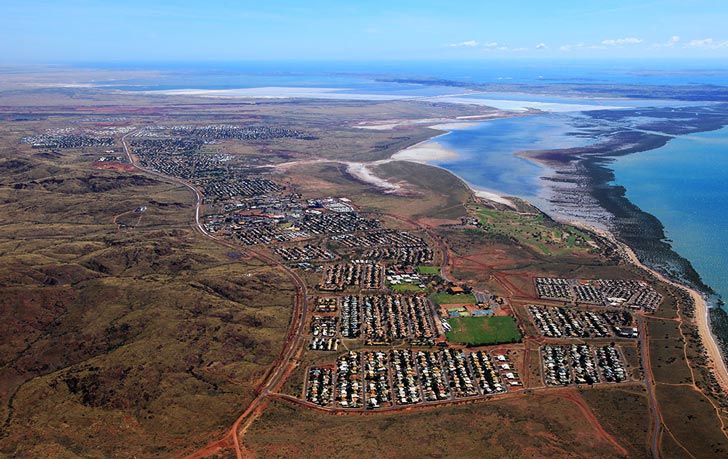Australia’s quarter-century run of uninterrupted economic growth has made its property market one of the world’s most expensive, but mortgage pain in towns hit by a commodities downturn is beginning to be felt in parts of the financial system.
While most Australians are able to pay their debts, alarm bells have sounded around pockets of distress in the mining-heavy states, raising warnings from policymakers, ratings agencies and the Organisation for Economic Co-operation and Development.
In the remote mining town of Karratha in Western Australia, 61-year-old Peter Lynch received a letter advising him that his bank was going to repossess his house at the end of the March.
“My property in 2010 was worth $905,000, today it’s worth $260,000,” Lynch said, estimating that seven out of 20 homes on his suburban street were for sale.
Two decades ago, Lynch borrowed money to buy a five-bedroom house in the town, thinking his job as a railway maintenance worker at Rio Tinto would last until he retired.
But the end of a one-in-a-century mining boom changed all that.
He now owes $222,000 and earns $42,000 a year as a cleaner, or roughly half his pay at the mine.
Western Australia is the hardest hit Australian state, with mortgage delinquencies topping 2.1 per cent, up by nearly half year-on-year, according to credit ratings house S&P Global.
S&P Global said 30-day arrears on mortgages packaged in issued securities were at multi-year highs.
Alena Chen, a senior analyst at Moody’s, expects rising underemployment and weak wage growth to drive delinquencies higher in mining-intensive states.
Signs of stress are now showing in the mortgage insurance market – shares in Australia’s largest mortgage insurer, Genworth Mortgage Insurance, are down 19 per cent since early February.
The company, which provides protection to lenders from borrowers defaulting on their home loans, last month reported an 11 per cent profit drop in 2016 due to a jump in mortgage delinquencies.
Borrowers typically pay for insurance when they have less than a 20 per cent deposit on their home purchase.
Genworth said in February that last year’s loss ratio of 35.1 per cent, up from 24 per cent in 2015, reflected higher average paid claims in resources-exposed regions, particularly Queensland and Western Australia.
Pockets of pain
Australia’s arrears rate of under 1 per cent, according to industry estimates, is still modest compared with the US peak of 27 per cent seen during the 2007-09 subprime mortgage crisis, and Australia has almost no subprime loans as such.
For now, rising arrears have not materially impacted the wider property market or financial system.
The major banks remain in good health and the mortgage-backed securities market, which finances the loan books of smaller banks and lenders, enjoys strong investor demand. And unlike the US, Australia has had no mortgage-backed bond defaults.
But investors and economists are worried stress could spread should there be a sudden loss of faith in the property market.
Concerns ‘already present’
Real estate is a national obsession in Australia, where two-thirds of households own a home. Since 2009, home values in the nation’s largest city of Sydney have more than doubled, while Melbourne has increased 88 per cent.
Australian households are among the world’s most indebted with a debt-to-disposable income ratio at an all-time peak around 180 per cent, compared with about 100 per cent in Germany and 150 per cent in the US.
Domestic mortgage debt stands at a whopping $1.7 trillion, equal to the country’s entire annual economic output.
Last week, the OECD singled out a “dramatic house-price correction” as the biggest threat to the Australian economy.
Reserve Bank of Australia governor Philip Lowe last month said the bank was wary of easing further for fear of creating housing vulnerabilities, particularly in the mining states.
Steven Hur, acting head of credit at AMP Capital which manages around $58 billion in fixed income, said market concerns about property prices were already present.
“It may push sellers to move first, thereby potentially signalling to the market a decrease in house prices, which may in turn spark further pressure on pricing,” Hur said.

